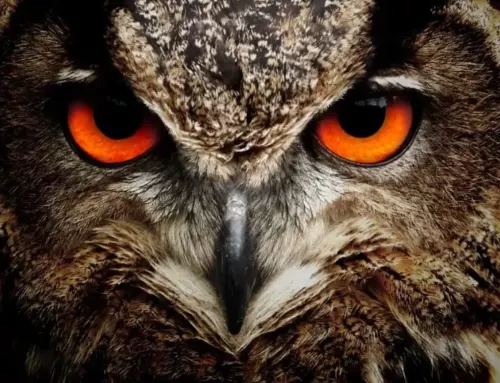The emperor penguin (Aptenodytes forsteri), the largest and most regal of the penguins (Sphenisciformes), is recognized for its dignified bearing and distinctive black and white coloring. Around 50 colonies of this species have been spotted along Antarctica’s coast, where they have taken up residence on ice shelves and landfast ice. The emperor penguin is the deepest diving bird, capable of plunging to depths of about 550 meters (1,800 ft) in pursuit of food.
PHYSICAL FEATURES

Black and white make up the majority of an adult’s body, while orange and yellow accent the face, neck, and chest. It is possible for individuals of this species to reach a length of 130 cm (50 inches) and a weight of 25 to 45 kg. (55 to 100 pounds). Juveniles are smaller than adults and have similar plumage, although their feathers are a drab white or light gray rather than bright orange or yellow. Baby emperor penguin have gray downy feathers all over their bodies. The feathers around the eyes are white, but the rest of the head is covered in black. Several smaller Antarctic island species, such the king penguin (Aptenodytes patagonicus), are very similar to the emperor penguin.
PREDATORS AND PREY
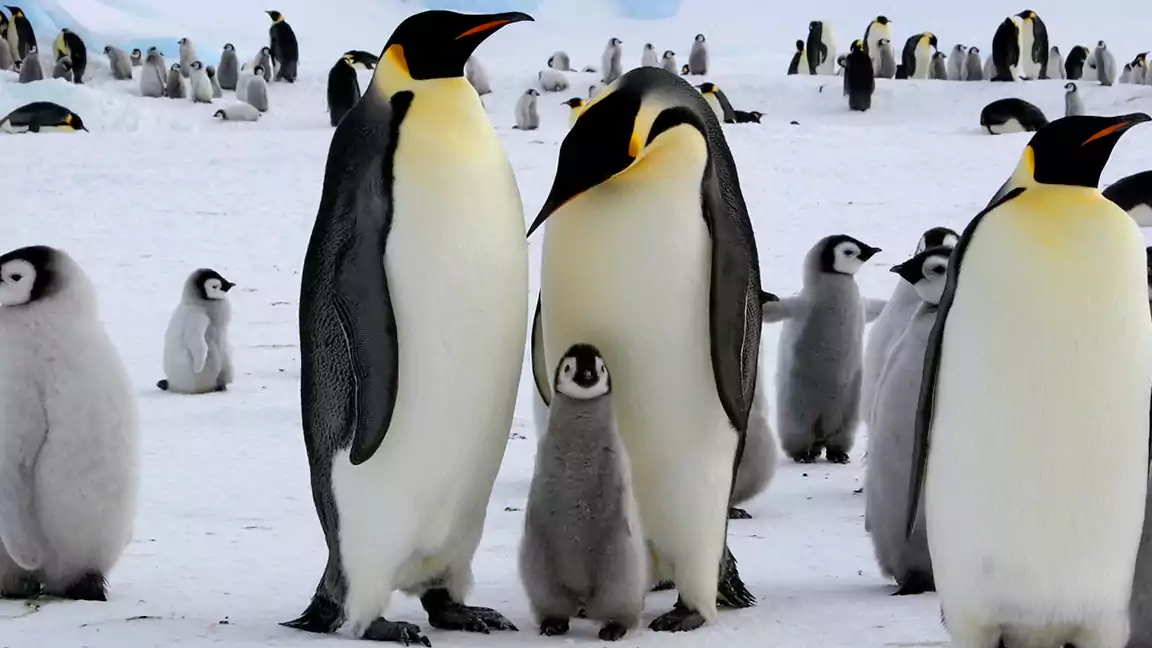
Emperor penguins are expert divers, able to stay down for up to 22 minutes at a time, and feed on krill, fish, and squid that congregate beneath or just outside of ice shelves. Some have even made it as far as New Zealand, the Kerguelen Islands, Heard Island, the South Sandwich Islands, the Kerguelen Islands, and Tierra del Fuego in the South Atlantic. Killer whales (Orcinus orca), leopard seals (Hydrurga leptonyx), and giant fulmars are among the predators that target this species. (Macronectes giganteus).
HOW TALL ARE EMPEROR PENGUINS?

The emperor penguin, at a maximum of 3.7 feet (1.1 meters) in height, is the highest of all penguin species. Males average between 75 and 80 pounds (34 and 36 kilograms) and 3.6 feet in height as adults, making them slightly larger than females. (1.1 meters). The average female emperor penguin weighs approximately around 60 to 70 pounds (27 to 32 kg) and stands around 3.3 feet tall. (1 meter). When hunting for fish and krill, emperor penguins can dive to depths of more than 500 meters (1,640 ft) despite their massive size.
REPRODUCTION
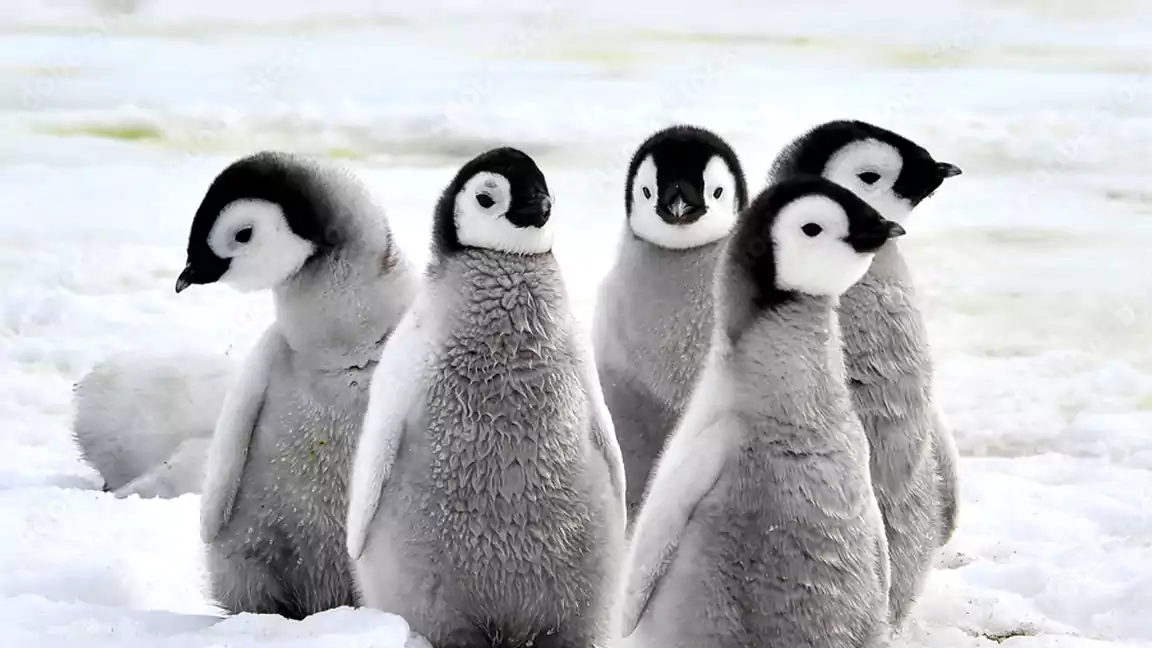
The emperor penguin is a colonial breeder. The mating season begins in late March or early April, when males and females return from marine foraging. Despite the lack of a nest and the enormous size of the colony, about 15% of adults are able to locate their spouse from the previous year. It appears that breeding occurs at the optimal time of year so that the long gestation period results in fully developed offspring at the height of summer when their chances of survival are highest. This results in the laying of a single egg in late May or early June, shortly before the commencement of the Antarctic winter.
In August, the young fledge, and the females return to the colony to relieve the males. Until it is tough enough to resist the Antarctic ice on its own, each chick balances on the feet of one of its parents. However, the young are vulnerable to more than just the cold weather. Individuals who have lost chicks or eggs add to the pool of “unemployed” adults in the colony, which can lead to higher chick mortality by interfering with the efforts of parents still caring for their young.
When juvenile emperor penguins reach the crèche stage, when they band together for warmth and safety from predators, the soft down they were born with is shed and replaced by a coat of short, stiff feathers that are structurally similar to those of an adult but typically a different color. After this process is complete, the young penguin will venture out to sea to find its own food. During their first year, juveniles mature in the months of December and January; by their fifth year, they have returned to the colony to breed. The average lifespan of an emperor penguin in the wild is 20 years, whereas those kept as pets can live up to 50.
PENGUIN FACTS FOR KIDS
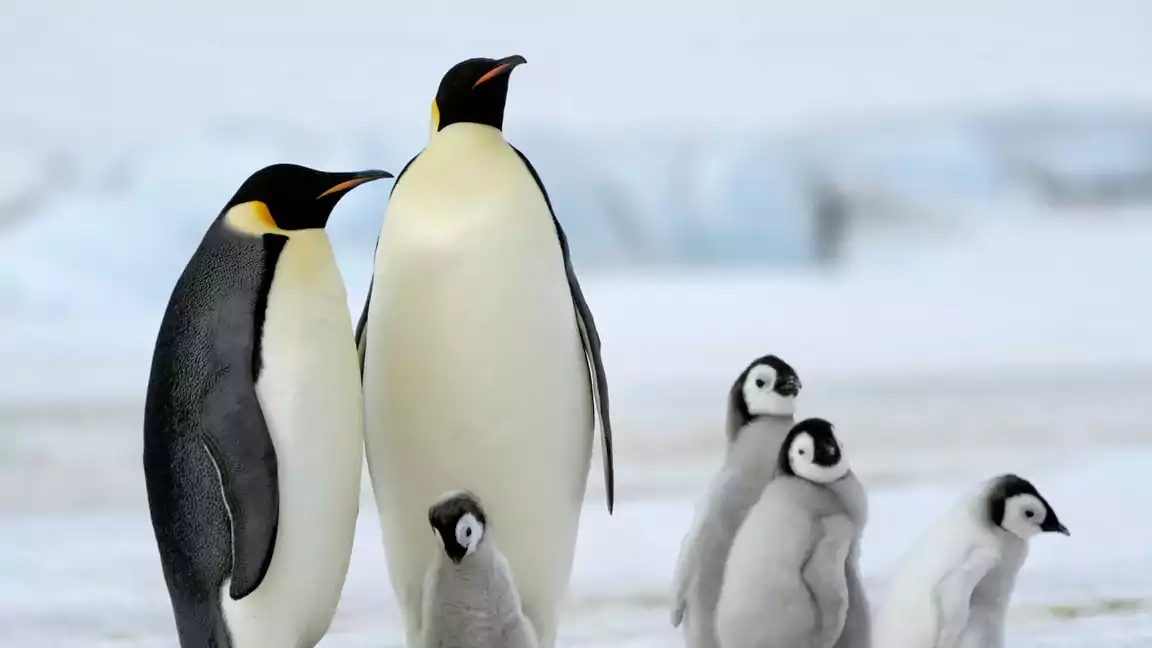
ICE, ICE, BABY
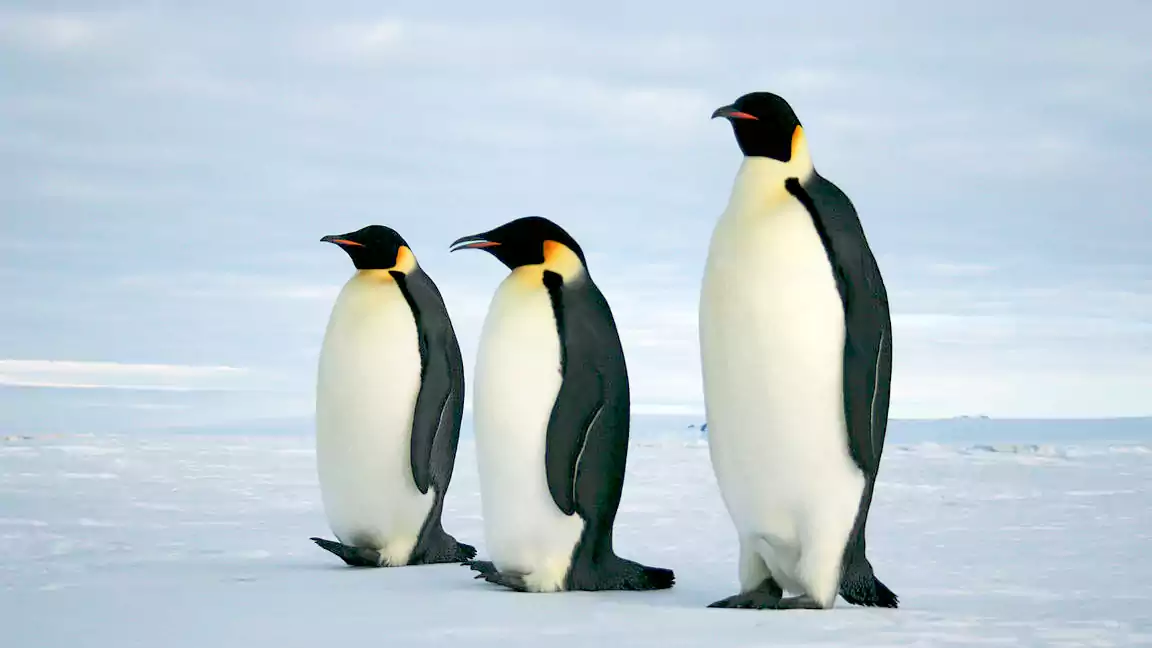
The only place on Earth where you can see a wild Emperor penguin is Antarctica. ‘Fast ice,’ a platform of frozen ocean connected to land or ice shelves, is where they do most of their breeding and raising of young. They are born on the Antarctic ice and spend their whole lives there, with the exception of a few strays that have been spotted off the coast of New Zealand.
PENGUIN HISTORIC GREATS
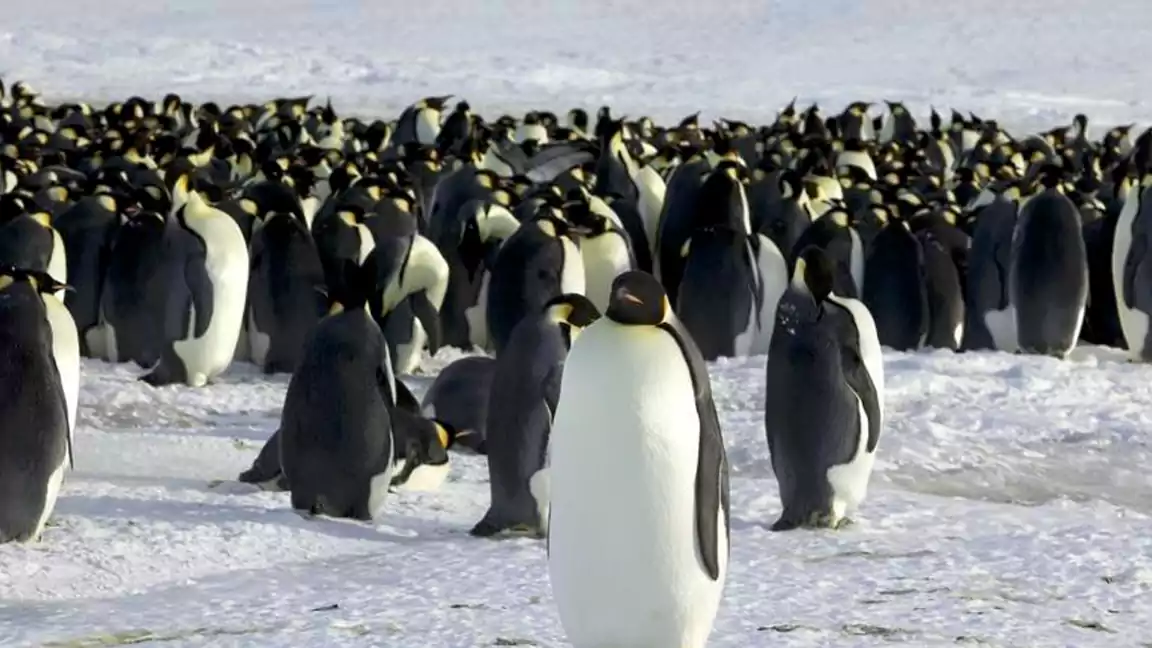
The emperor penguin is the largest of the world’s 18 penguin species, and one of the largest birds in general. They average about 40 kilograms in weight and 120 centimeters in height (a height of a child of six years old), while their weight varies greatly throughout the year. In comparison to the old “mega-penguins,” however, they would be tiny. Approximately 37 million years ago, a colossal species of penguin called the antarctic penguin may have reached a height of 2 meters and weighed as much as 115 kilograms, according to fossils discovered on the Antarctic Peninsula.
HOW MANY PENGUINS ARE THERE?
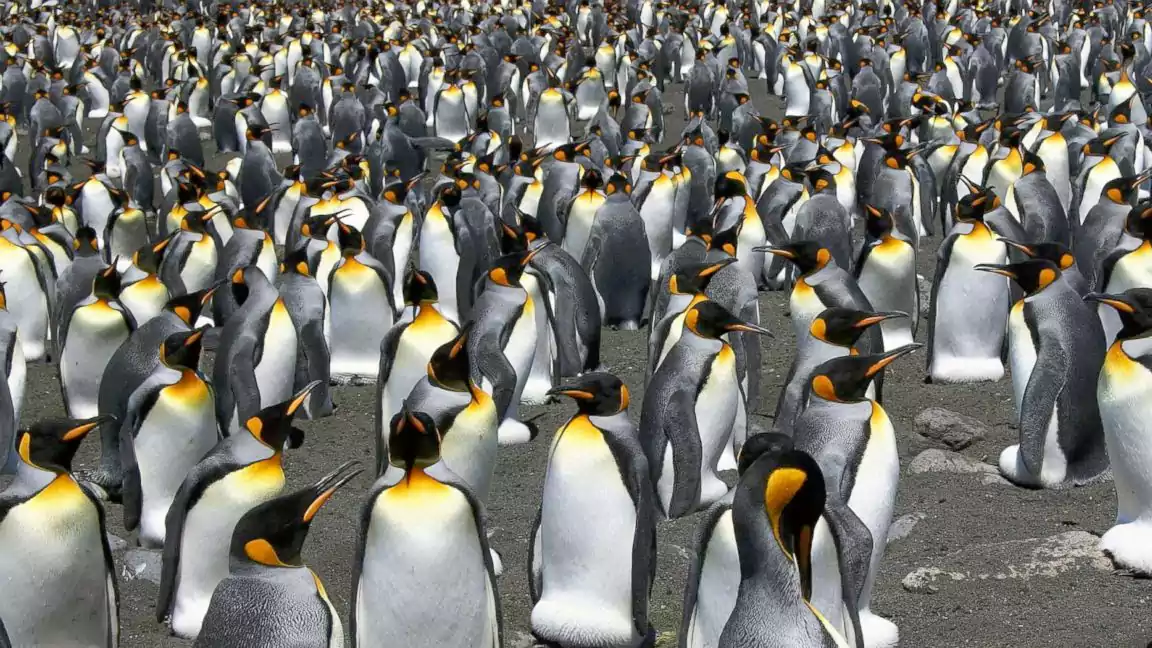
In Antarctica, you may find about 595,000 adult Emperor penguins. However, there is still a great deal we don’t know about these spectacular arctic species because of a paucity of research. In order to further ensure their safety, we are investing in Antarctic research. This will promote the establishment of MPAs, which will aid in safeguarding species as a result of climate change.
PENGUINS IN SPACE
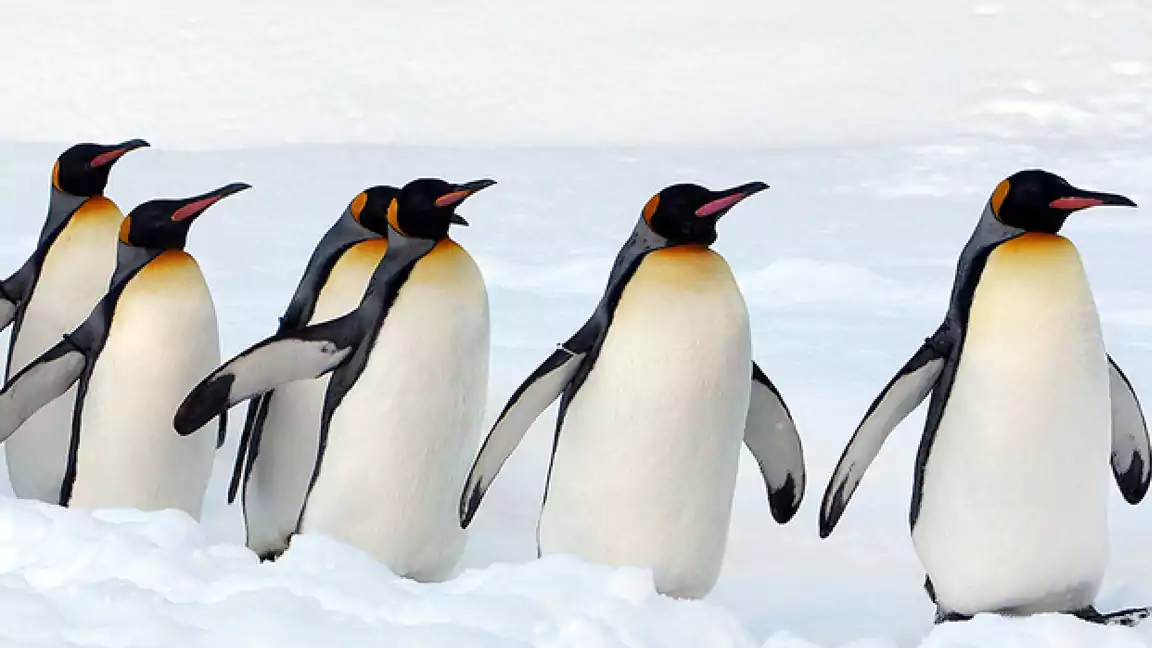
Counts of emperor penguin colonies have been made from orbit. The poop streaks on the ice at breeding sites were used by British scientists in a 2012 investigation to identify emperor colonies. They found several new colonies nobody had ever seen before, and they tallied every single penguin living there. The number of Emperor colonies in the Antarctic is estimated to be around 54. There are still many of these that have never been visited, despite the fact that around half have been found through satellite surveys.
LOVE, PENGUIN
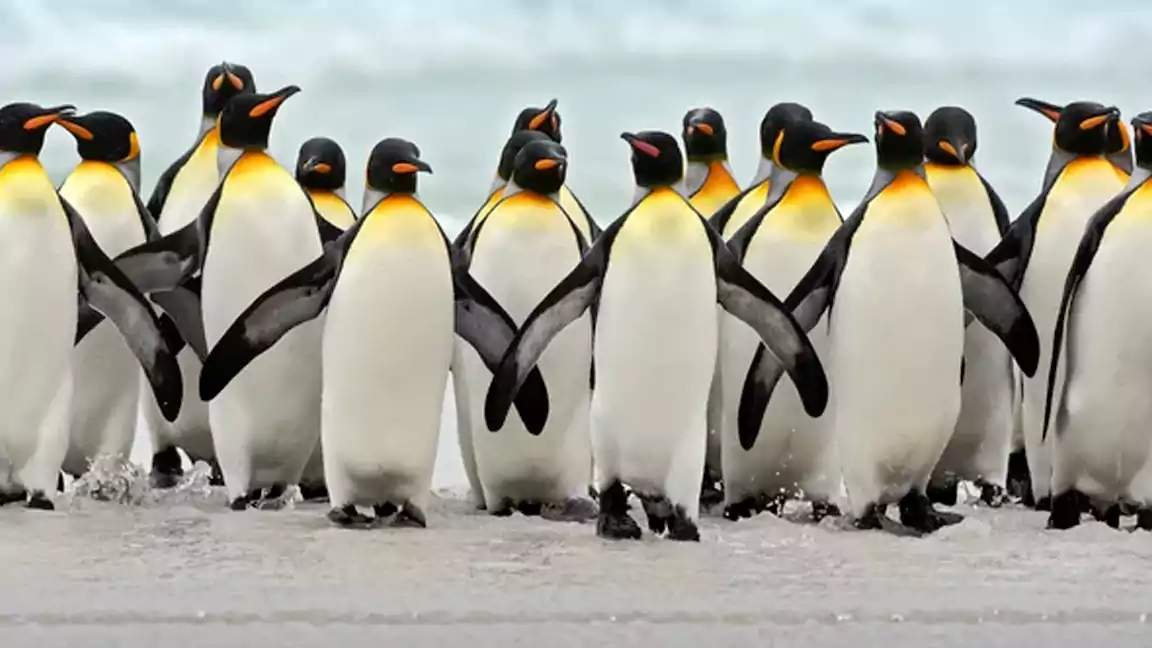
Eggs laid by an emperor are incubated over the long, dark southern winter months. The female lays a solitary egg in May or June after a lengthy courtship that culminates in elaborate displays. She gives it to her partner, who incubates it, and leaves. She will be out at sea for the next nine weeks as she eats. In order to keep the egg warm and off the snow surface for the required 65–75 days until it hatches, the male delicately balances it on his feet in a specially constructed brood pouch. Then a little fluffy chick emerges.
I’M FREEZING OUTSIDE, BABY
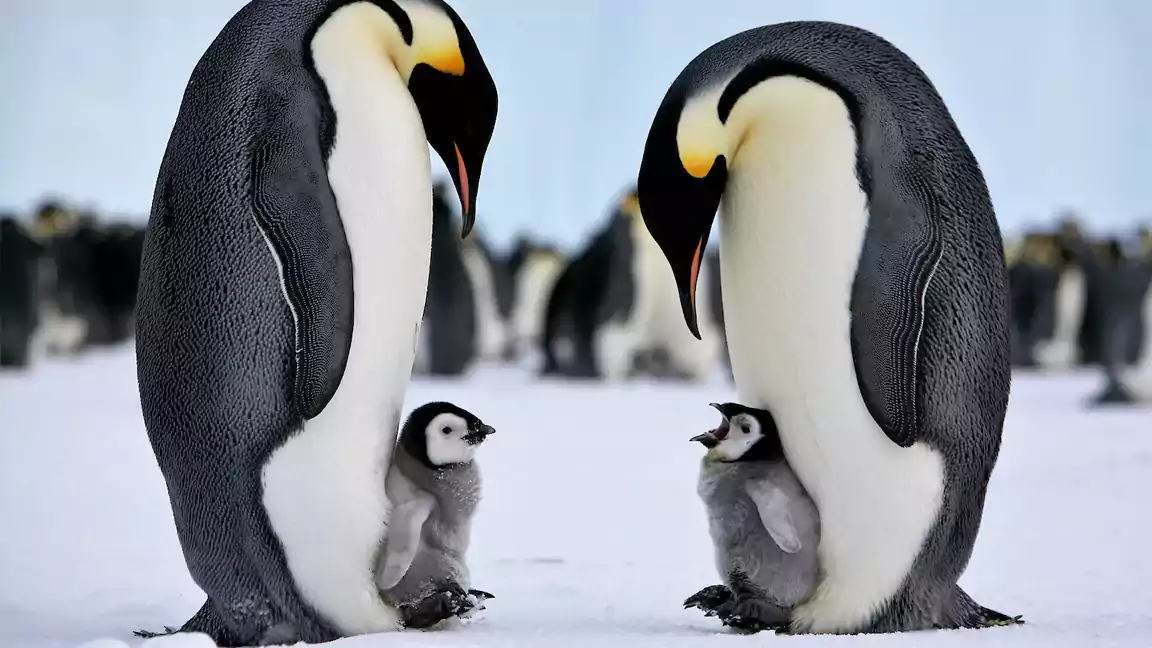
There are only emperors that can withstand the -50°C temperatures and 200km/h winds that occur in such extreme environments. The penguins’ ability to retain body heat is enhanced by the double layer of feathers covering their bodies, the large amount of fat they carry, and the reduced size of their beaks and flippers in comparison to other penguins. The feathers on an emperor’s legs keep the frost off his feet.
Their feet, too, are well suited to the chilly climate, with thick fats that keep them from freezing and sharp claws for securing footing on the ice. Most impressive, though, is the way in which entire colonies of adults and young cooperate together to snuggle for warmth. A crowd of five thousand adults and little ones shuffles around so that everyone has a brief stint on the cold outside. This is in stark contrast to their possessive and combative Adélie penguin neighbors.
DIVE, DIVE, DIVE!
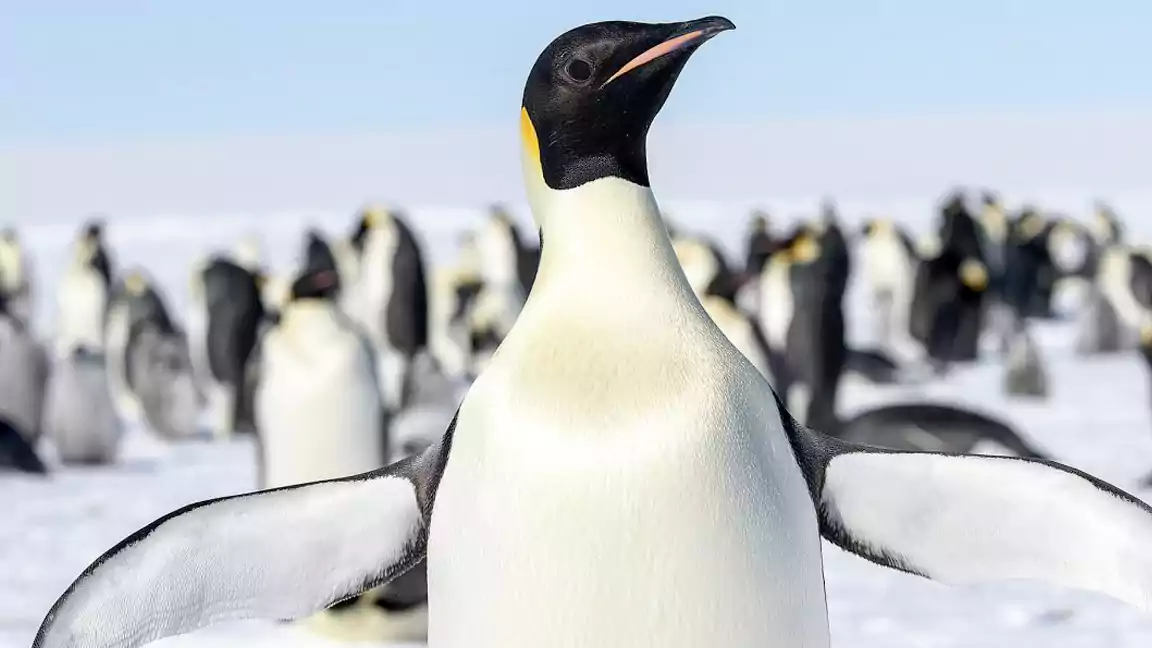
When it comes to birds, emperor penguins are perhaps the best divers. The deepest dive ever documented was 564 meters, which is nearly twice as high as Europe’s tallest building, the Shard. The longest dive on record lasted for over 28 minutes. Seriously, that’s amazing!
FISH FEEDERS
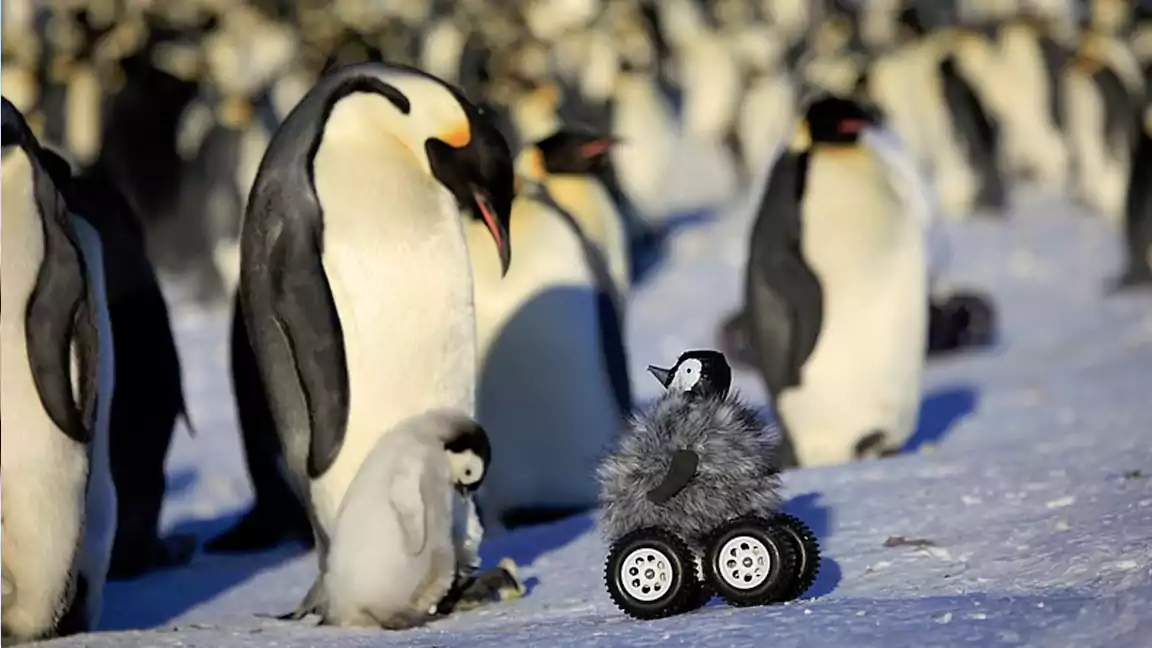
The Antarctic silverfish is the primary food source for emperors, though they also eat other fish, krill (like Will and Bill from Happy Feet), and even some squid. On average, an adult penguin consumes 2-3 kg of food per day, but on a very good day, they may consume up to twice that much in order to stock up on fat for the long winter ahead or to feed their offspring.
AND FAST DIETS
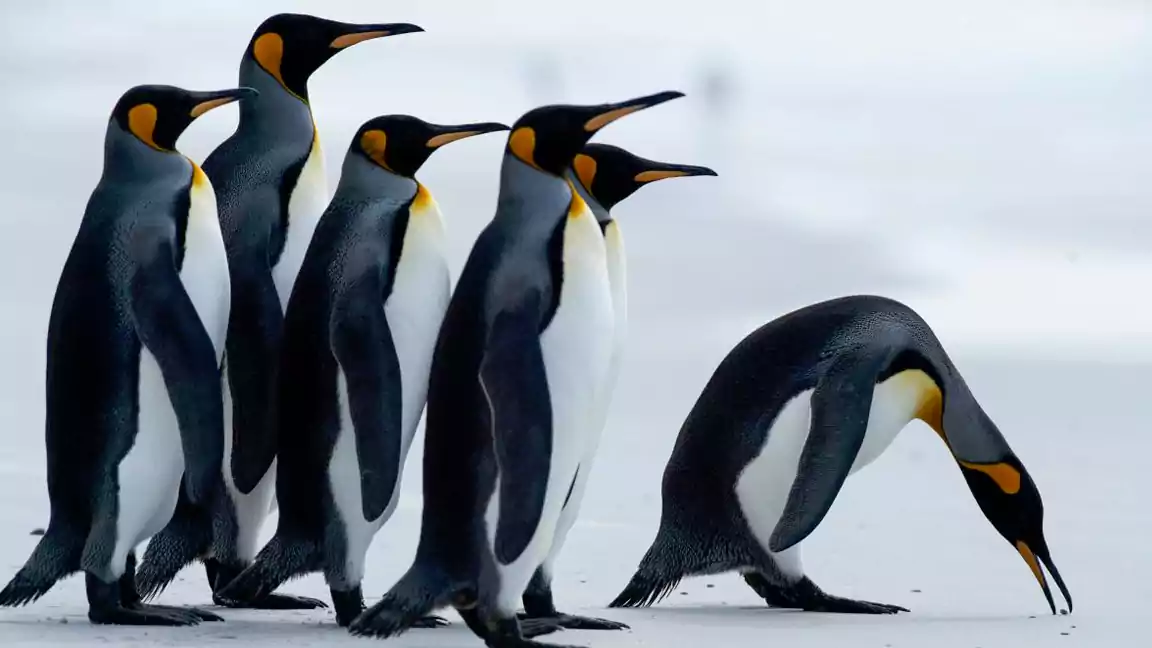
When male Emperor penguins arrive at the breeding colony, they will fast for up to four months, until the egg has hatched and the mother returns to feed the chick. During this phase, they can lose as much as half of their body weight. For the duration of the harsh winter, they have only their stored body fat from the summer feast to rely on.
RESTRICTED EMPEROR PENGUIN HEIGHT
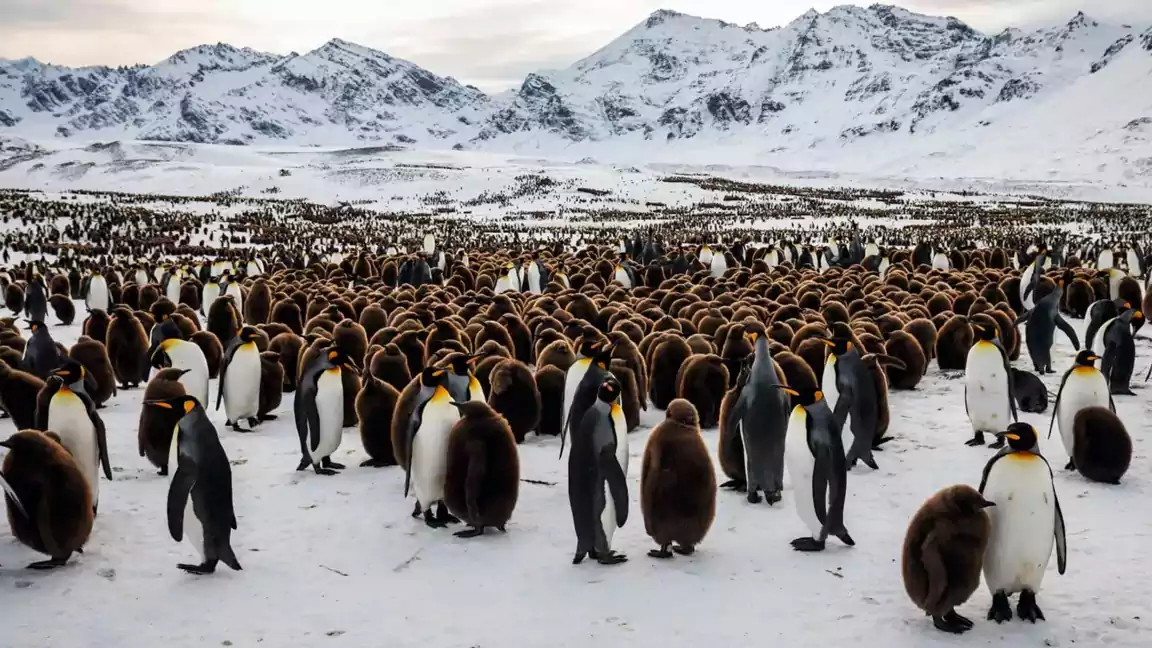
If the sea ice below melts, emperor penguins can ascend the ice cliffs to a safer place to procreate. Researchers from the United Kingdom and Australia found four emperor penguin colonies in 2013. Two of these were permanent settlements on the ice shelves of Barrier Bay and Larsen C, and the other two were nomadic, seasonal settlements on the Shackleton and Nickerson ice shelves. While this may help in the short term as Antarctica heats owing to climate change, if the warming continues at its current rapid pace, it may not be effective in the long run.

